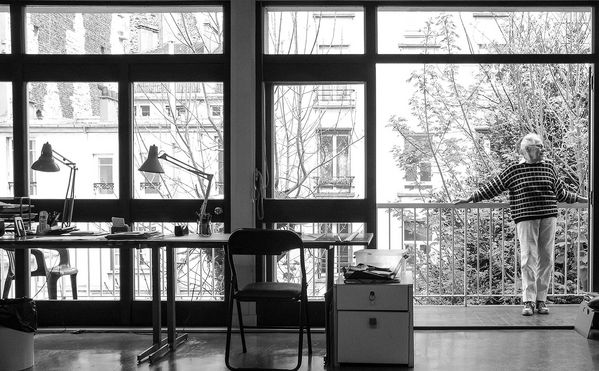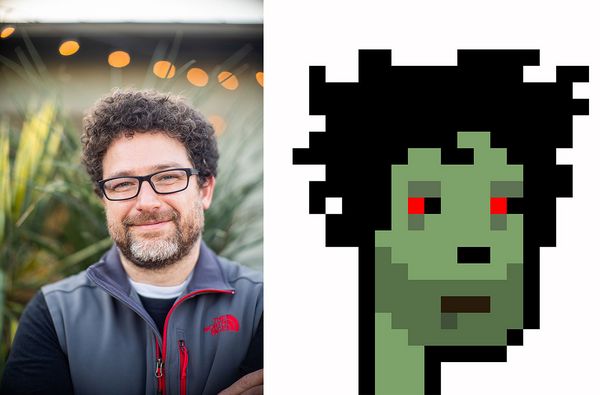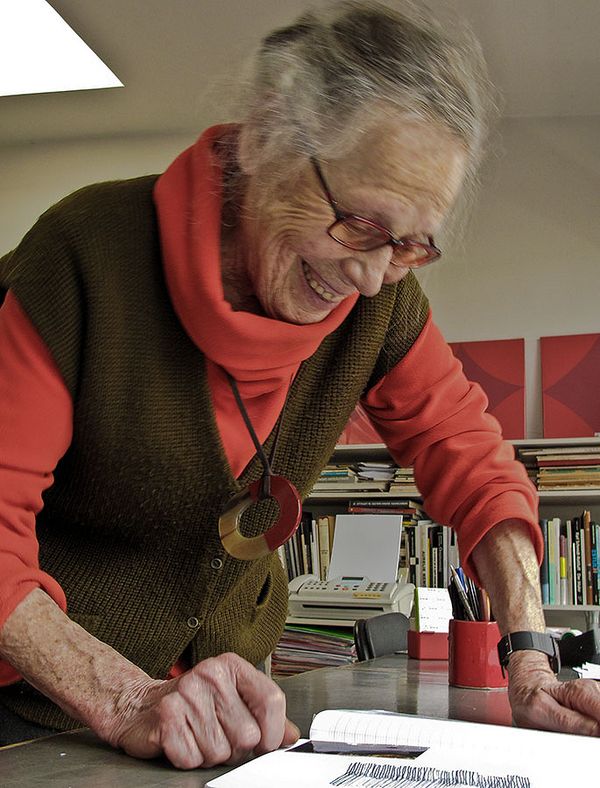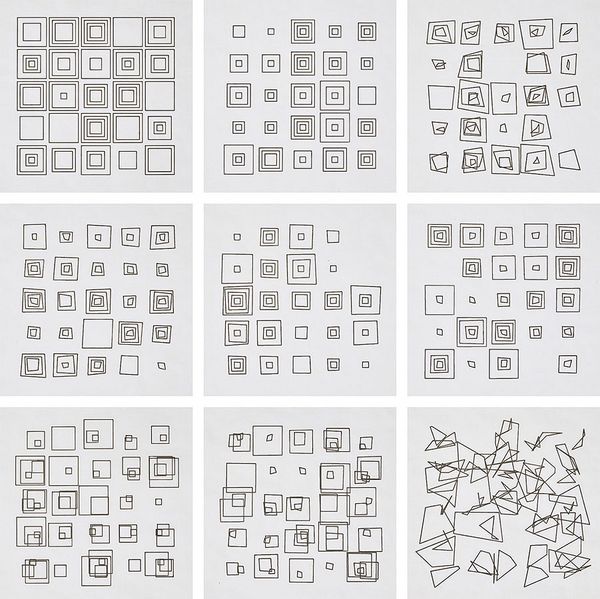Vera Molnar, (Des)ordres, 1974. Ex-Machina: A History of Generative Art.
Erick "Snowfro" Calderon: Vera, I understand that access to a computer in the early days is very different than it is today. Can you please describe the feeling of being in front of a computer when you were starting your practice? What was the environment like? Did you find it energizing? Or intimidating?
VERA MOLNAR: I started to make computer-assisted visual art around 1968 at the Centre de calcul de l'universite de Paris in Orsay. It was with gigantic grey machines, squalid, in huge rooms. To cool the computer, you needed a whole room that blew air. It was very intimidating. At first I didn't know what I could do with the computer, but I had the feeling that it was something invented for me to develop my visual ideas. I always dreamed of having an assistant as a docile, all powerful, non-unionized "slave" who would work even at night and on weekends and obey. So I said to myself, the computer must be that!
1968 in France was a very good time for me.The students were demonstrating on the Boulevard Saint Michel, in the Latin Quarter in Paris, so I had the computers at Orsay all to myself. The technician, who was bored to death, was only too happy to help me with the programming. I came from a fine arts school; I learned Fortran by taking a training at the University of Tolbiac, but I was far from being a specialist. I learned a saying during that course that still helps me today: garbage in, garbage out. If you do something that doesn't make sense, it won't work or it will produce something that is confusing. It was in those years that I started to make the most beautiful computer pieces of my career, and also the use of computer paper rolls interested me a lot because it allowed me to introduce the dimension of time by reading from left to right, on the whole roll.

Vera Molnar. Photo: Laszlo Horwath.

Erick "Snowfro" Calderon.
EC: Today, we get to use repetition and trial and error in developing our work on a computer. I assume time was limited in front of a computer in the early days and you had to do significant planning ahead to maximize your time on the keyboard. Can you share a little of that process or preparation?
VM: One day, I arrived at the University of Orsay and I saw a strange thing. It was a display screen on the computer. I asked the technician what it was, and he answered: "Oh, don't worry, it's a new gadget from IBM, it will go out of fashion." I understood that this gadget was going to be my salvation. You get flashes of insight. It was something that was going to give me an answer very quickly. Before, I had to program in Fortran, with punched cards, and then wait several days to get the answer, which was almost always wrong or at least not exactly what I wanted to do.
And here, I said to myself that with this screen it was going to be like a conversation, like a real pictorial process: you move the "brush" and you see immediately if it suits you or not, even if it means doing it differently. There is a kind of dialogue that takes place. It's like a form of visual psychoanalysis in fact, which brings to light your own nonsense, I mean the repetitions or the ramblings of something already said 10 times [...] It gives an immediacy that I really like. It's like playing Ping Pong! This IBM gadget really changed my life. It was exactly the same thing when I saw in Budapest a few years before, as a student, a first reproduction of Matisse from the Fauvist period, with brilliant colors, it changed my life.
EC: When did you first get your own personal computer at home? What did you do with it?
VM: In 1980 I was able to have a personal computer in my studio. This also completely changed my life. First of all, I was the owner of this machine, so I could work as I wanted and when I wanted. I made the most of that computer. It was great to go to bed at night and hear the computer and the plotter working by themselves in the workshop; it was my "slave" doing the work...

Vera Molnar. Photo: Laszlo Horwath.
Discover More from Ex-Machina: A History of Generative Art >
Recommended Reading
